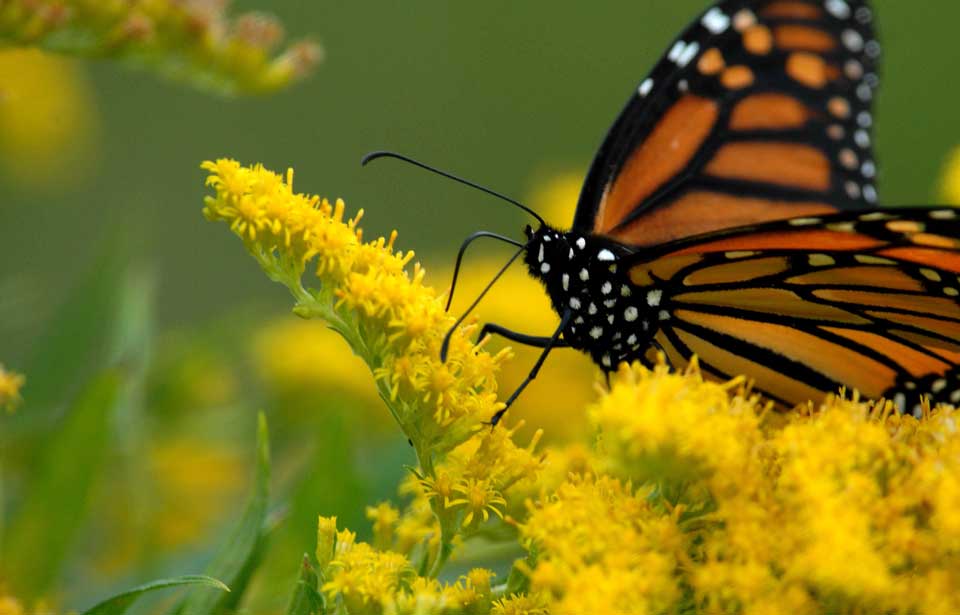Change your schoolyard or backyard from a boring no-bug’s-land into a colourful, insect-rich paradise. Habitats for hard-working pollinators, like bees and butterflies, are especially rare these days. Development and pollution are destroying many of the wildflowers these creatures depend upon. Some of these habitats are highly specialized, like that of the endangered Furbish’s lousewort. This yellow wildflower grows in just one spot on Earth — along the banks of the upper St. John River in New Brunswick and Maine. The humble bumble-bee is its chief pollinator, so a shortage of bees could mean disaster for Furbish’s lousewort. Be kind to bees (and all pollinators) by planting their favourite flowering foods.
- Bees like most wildflowers but are especially fond of blue and yellow blooms.
- Plant a diversity of plants and shrubs that bloom in spring, summer, and fall.
- Choose bee-balm, black-eyed Susan, cardinal-flower, butterfly weed, Canada goldenrod, catnip, common sunflower, common milkweed, peppermint, and fireweed to help boost bee biodiversity. Lowbush blueberry is a hit with the 60 or so bee species that buzz in Quebec and the Atlantic provinces.



